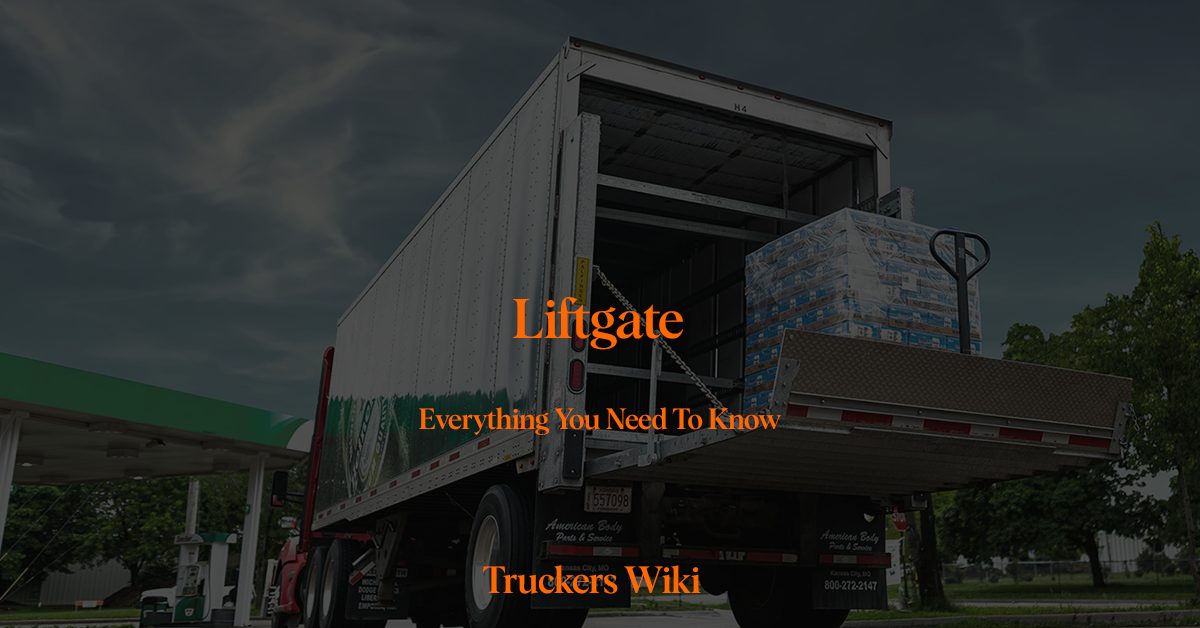
Table of Contents
What is a Liftgate?
A liftgate, also known as a lift deck, hydraulic lift, or tail lift, is a mechanical device installed at the rear of a truck, van, or trailer. It’s designed to elevate and lower goods, equipment, or people between the ground and the cargo space of the vehicle. The primary aim of a liftgate is to facilitate safer and more efficient loading and unloading processes, especially for heavy or bulky items.
Learn about all trailer types here.
Types of Liftgates
Various types of liftgates cater to different trucking requirements. Some of the most common types include:
1. Tuckaway Liftgates: These liftgates fold and store beneath the rear of the truck when not in use, hence the name ‘tuckaway’. They are popular due to their space-saving nature and versatility.
2. Rail Liftgates: Mounted on the truck’s rear, these liftgates operate on vertical rails that lift and lower the gate. They are known for their strength and durability, making them suitable for heavy loads.
3. Cantilever Liftgates: These liftgates are typically found on larger trucks and trailers. They have a unique folding mechanism that allows them to adjust to the load’s size and shape.
4. Slider Liftgates: Also known as ‘slide-under’ liftgates, these are stored beneath the truck’s bed when not in use. They are often used on semi-trailers due to their high weight capacity.
Operation and Safety Measures
Operating a liftgate involves using a control switch that triggers a hydraulic pump, lifting or lowering the platform. While liftgates simplify the loading and unloading process, it’s crucial to follow certain safety measures. These include:
- Ensuring the vehicle is parked on level ground before using the liftgate
- Keeping the liftgate platform clear of people during operation
- Verifying the load doesn’t exceed the liftgate’s weight capacity
- Checking that the load is securely positioned before lifting or lowering the platform
- Regularly servicing the liftgate to ensure its hydraulic and electrical systems are in good working order
Maintenance of Liftgates
Regular maintenance is essential to keep a liftgate in optimal working condition and extend its lifespan. This typically involves:
- Checking for any hydraulic leaks, as these can affect the liftgate’s operation
- Regularly lubricating all moving parts to reduce wear and tear
- Ensuring the battery is in good condition, as a faulty battery can affect the liftgate’s performance
- Inspecting and servicing the liftgate’s mechanical components regularly to ensure they are functioning correctly
- Cleaning the liftgate periodically to prevent rust and corrosion
Liftgates facilitate efficient, safe, and swift loading and unloading of goods. Usually combined with a pallet jack. They are particularly beneficial when delivering goods to locations without a loading dock, such as residential areas, small businesses, or rural areas.
Image credit Palfinger.
Learn about Swing Doors here.
Learn about Roll Up Doors here.
Learn about Accessorial Charges here.
External Links
Watch a video of DTITrucks about tuckaway lift gate operation and safety here.

